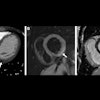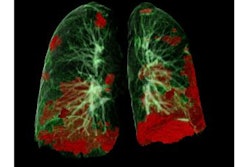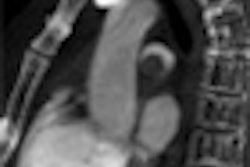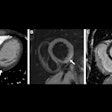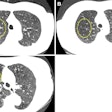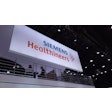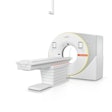Based on mounting evidence that lung cancer screening with CT can save lives, the American Lung Association on Monday recommended CT lung cancer screening for smokers and former smokers. The move is a major step toward the development of a population-based CT screening program in the U.S.
Lung cancer remains the leading cause of cancer death for both men and women in the U.S., with more than 150,000 deaths per year and a five-year survival rate as low as 15%. CT screening is the only path -- outside of never smoking to begin with -- that has shown significant potential to reduce lung cancer's toll.
The association's interim guidelines reflect recent evidence indicating that most lung cancer deaths can be prevented when detected at an early stage with CT. Recent research from the U.S. National Cancer Institute's National Lung Screening Trial (NLST) found that low-dose CT can reduce mortality by at least 20% compared to chest x-ray, and other reports have pushed the estimated mortality gains even higher.
The American Lung Association's guidelines, developed by Dr. Jonathan Samet and colleagues on the association's lung cancer steering committee, follow the NLST recommendations for low-dose CT scans. To qualify for screening under the interim guidelines, individuals must meet the following criteria:
- Be a current or former smokers (age 55 to 74 years)
- Have a smoking history of at least 30 pack-years (i.e., smoking a pack a day for 30 years)
- Have no history of lung cancer
The guidelines emphasize that chest x-ray should not be used for lung cancer screening due to its low sensitivity for lung cancer detection in the NLST trial.
"This is good news," Dr. Ella Kazerooni, professor of radiology at the University of Michigan, told AuntMinnie.com. "I was a little surprised by the timing since the NLST results came out last fall -- and have actually been out for considerably longer than that -- and the [NLST's] cost-effectiveness analysis is still not out. But the American Lung Association is clearly following on the heels of the National Comprehensive Cancer Network, which last fall was the first major professional organization to come out with a recommendation for lung cancer screening with CT in the same population in terms of age and smoking history that was enrolled in NLST."
Cost-effectiveness
There has been a recent cost-effectiveness analysis, but not from the NLST. Earlier this month, an article in Health Affairs concluded that lung cancer screening for CT would be highly cost-effective, but the analysis was from the third-party payor perspective rather than a public health recommendation. As a result, screening advocates are still waiting for the NLST's cost-effectiveness analysis, which is being put together by Dr. William Black and colleagues at Dartmouth University, Kazerooni said. That paper will be ready for journal submission by late spring or early summer.
"We're very hopeful that [lung cancer screening] will come in line with the cost of other screening tests," Kazerooni said.
The endorsement of lung screening by a second major health organization "indicates some growing momentum in the professional community toward lung cancer screening with CT," she said. The recommendation "should ultimately help us face some hurdles with lung cancer screening with CT," which is mostly about third-party reimbursement. But there has been movement there too, Kazerooni said.
Finally, last December one of the major third-party payors, WellPoint, said it would begin paying for lung cancer screening with CT in some of its products, "which is another good data point along the way to help build the case with other payors," Kazerooni said. But the biggest remaining hurdle is working with the U.S. Centers for Medicare and Medicaid Services (CMS) and the U.S. Preventive Services Task Force (USPSTF) to review their guidelines, hopefully in favor of screening, she said.
In its report, the American Lung Association notes that while CT screening may save lives, screening for lung cancer is not recommended for everyone due to many known and unknown risks that may be associated with the screening and subsequent medical evaluation and follow-up. Never starting smoking and quitting smoking remain the best way to prevent lung cancer, said Dr. Norman Edelman, chief medical officer of the American Lung Association, in a statement accompanying the release of the report. People should also check their homes for excessive levels of radon, which can increase the risk of lung cancer, he said.
The report also recommends referring patients to facilities that have experience in performing low-dose CT scans, in addition to multidisciplinary teams that can provide comprehensive follow-up. It's also strongly recommended that hospitals and screening centers establish ethical policies for advertising and promoting lung cancer CT screening services.
"Our hope is that this report will guide the public on this very important personal and public health issue," said Dr. Albert Rizzo, board chair for the American Lung Association. "We believe that the report and the educational materials that will stem from it will be invaluable to the tens of millions at risk for lung cancer."
The full report, titled "American Lung Association Interim Report on Lung Cancer Screening," and related educational materials are available at the association's website.
